Introduction and Package
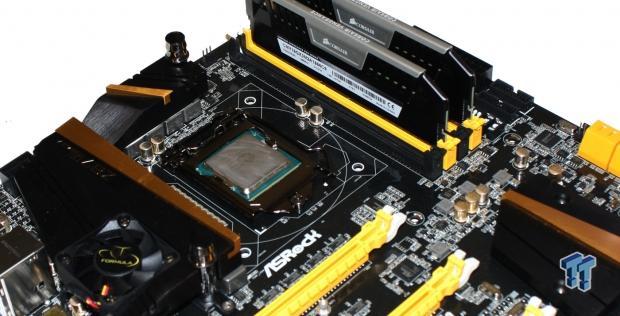
The ASRock Z77 OC Formula was shown off at Computex 2012 last year and we found ourselves impressed with what ASRock was doing with its new golden boy Nick Shih. Once shown off, though, it was still a few months before we finally got a chance to check out the motherboard in person. Once we got the board in our hands, we were not disappointed with what ASRock was offering.
They brought to the table a board that performed exceptionally well, offered strong overclocking capabilities, massive amount of features, a great bundle, and all at just a simply fantastic price point. It quickly became one of our favorite Z77 motherboards to use and became the center of all our RAM testing for a couple of reasons. The first was the overclocking potential on the board was great. The second, though, was the fact that Nick Shih, the man behind the creation, is so on top of the BIOS. Working constantly to provide the best BIOS to overclockers, Nick made sure that the latest and greatest memory was always compatible on it and working well.
For all these reasons we found ourselves extremely excited to check out what the team over at ASRock had done with the latest Z87 chipset from Intel. Initial showings of the board looked fantastic and seeing it Computex 2013 made our mouth water even more. So much so that when we talked to the friendly folk at ASRock and told them we'd happily take the board only for now, as we knew that the full package setups weren't being sampled yet.
So, with that said, today we'll be moving straight from here into the motherboard itself, since we don't have the box or the bundle to discuss. This is definitely one board we're excited to test, so let's just get stuck into it and see what exactly is being offered from ASRock on the new Z87 OC FORMULA.
ASRock Z87 OC FORMULA Motherboard
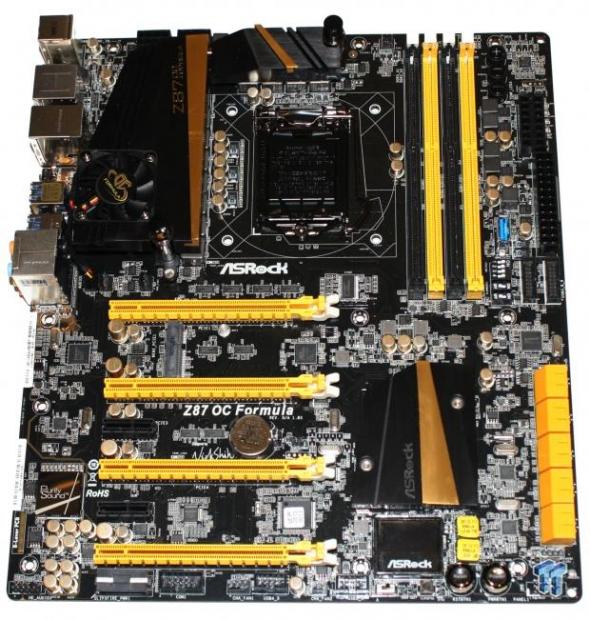
It very much resembles the original Z77 OC FORMULA in a lot of ways, but with a few changes. The overall color scheme is that same black and yellow bumblebee style and you can see a similar heatsink setup around the CPU area.
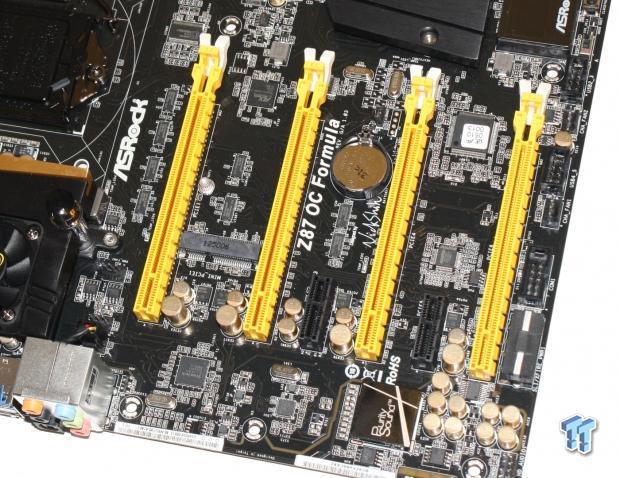
You can see we've got four PCIe x16 slots. If you're running a single card, the card will run at x16. If you're using two, the setup will be x8 / x8. If you go for a three card setup, you'll be running at x8 / x4 / x4.The final slot is a PCIe 2.0 x16 slot which runs at x4. Along with these we've also got two PCIe x1 slots and a mini PCIe slot between the top two PCIe x16 slots.

Moving across to the bottom of the board you can see a couple of USB 2.0 headers, COM header, main front panel header and an extra Molex power connector towards the right hand side. You can also see we've got a power and reset button towards the right hand side.
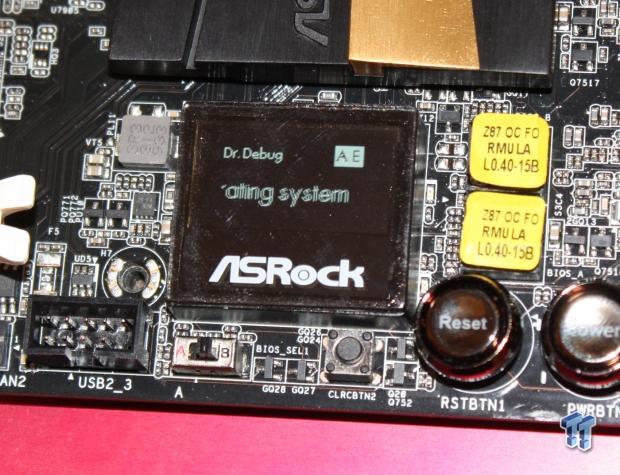

The area that really takes our interest, though, is the new OLED display towards the right hand side. Over the years we've seen the debug process become more and more advanced in a sense of making troubleshooting problems easier and easier. ASRock has really taken it to another level here. This display shows where we're at with the boot process and once everything is up and running. It can tell us other information like temperature. We saw it on display at Computex and it's just a really cool feature. We're glad to see ASRock jump on this and we're sure more boards will follow soon enough.

Turning the corner you can see we've got a total of eight SATA ports on offer. All are SATA III with the four closest do us being labeled A1 - A4 running off the ASMedia ASM1061 controller. The further six labeled 0 - 5 all run natively off the Intel Z87 controller and these are the main ports you would want to use for best performance.

Starting to head up towards the top of the board you can see the standard four DIMM slots which support up to 32GB of DDR3 ranging from 1066MHz DDR to over 3000MHz DDR via overclocking. You can also see a + and 1 button for overclocking on the go, along with voltage check points just below. We have the main 24-pin ATX power connector and instead of just a single USB 3.0 header like usual, we've got two here. Other little areas that stand out is the onboard USB port making updating the BIOS or saving screenshots extremely easy and next to that we have a switch that gives us the ability to disable PCIe slots, which is a great feature for overclockers.


Moving around to the CPU area side of things you can see we've got two 8-pin CPU power connectors. This is of course for people who need a strong clean line of power for LN2 overclocking. Most people will no doubt just find themselves using one. The CPU area has a water block mount along with a small fan which we must note is pretty quiet. The area looks great and if you've got a water cooling loop, you'd be crazy not to make use of the built in water cooling solution.

Heading over to the I/O department you can see we've got a PS/2 port on the left along with two USB 2.0 ports above that. Next to that you can see we've then got two HDMI ports, one is an in while the other is an out. From a USB 3.0 point of view you can see we've got a massive eight ports being offered and Gigabit networking is provided via the PHY Intel I217V chip. Between the large amounts of USB 3.0 ports, you can see a clear CMOS switch and finally we finish with an optical port and five auxiliary ports which run off the Realtek ALC1150.
BIOS
Heading into the BIOS you're not going to see anything new or out of the ordinary for the most party. ASRock haven't changed anything and for good reason, they already have a great BIOS that runs fast. Like any time you head to the BIOS, though, you'll probably want to look at the overclocking area which in the ASRock BIOS is the OC Tweaker section.


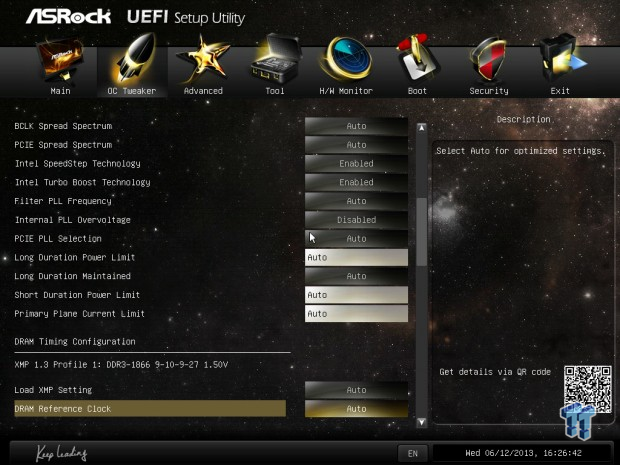



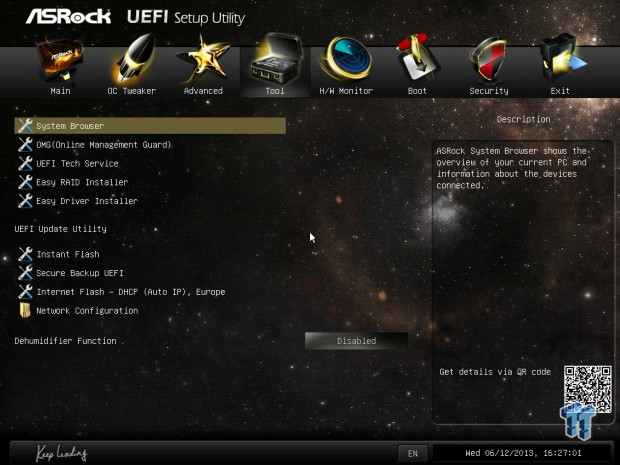



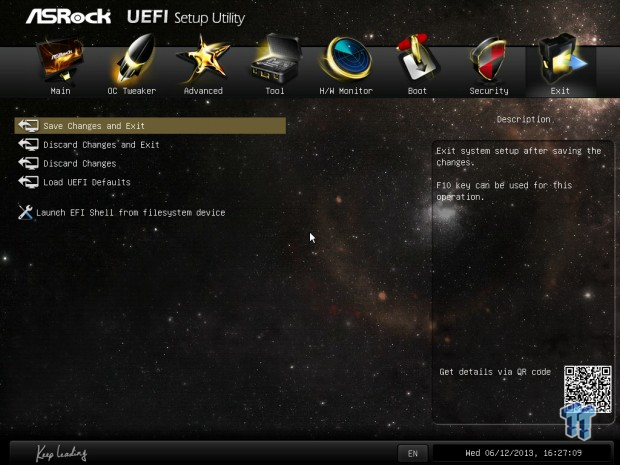
In the OC Tweaker section you can see everything that we've become accustom to seeing with all the normal options available including personal profiles by Nick and easier optimized profiles for overclocks. Moving out of the OC Tweaker section you see all the normal settings and options that you'd expect.
Benchmarks - Test System Setup and Overclocking

We would like to thank the following companies for supplying and supporting us with our test system hardware and equipment: Intel, ASUS, MSI, Western Digital, MemoRight and Corsair.
When it comes to the lineup of boards you'll see today, like our ASUS Z87 Expert review, most of the boards are Z77 as we take time to build up our database of new boards. Alongside the ASRock and the ASUS Z87 Expert, we've got the ASRock Z77 OC FORMULA, ASUS P8Z77-V Pro/Thunderbolt, MSI Z7A-GD65 Gaming and finally the GIGABYTE X79S-UP5-Wi-Fi.
When we first tested the ASUS Z87-Expert, we found ourselves kind of unhappy with the overclocking side of things. We didn't put too much emphasize on it being the board, though, as it seemed we just didn't have a great clocking CPU.
Talking to some people since launch, we've found that people have had CPUs do anywhere from 4.1GHz to 4.9GHz. The 4.6GHz we achieved with the ASUS board doesn't sound too bad in that case. We won't deny, though, going into the ASRock board we wanted to get more than that, especially from a board with so much promise in the overclocking department.
We decided to use the pre-overclocked settings that are offered by ASRock as a base and work from there. What we did was go straight to 4.8GHz (hey, we can dream?) to see just what would happen.
Kind of to our surprise the machine booted up straight away and got into Windows with no problems. We moved around a bit and everything was looking good. As always, though, unless it can complete our MediaEspresso encode (the test which always finds an unstable system for us), we consider it to be unstable. We started up MediaEspresso and everything was looking good... until we were a few minutes in and our machine BSOD'ed.

We headed back into the BIOS as always and decided to keep everything the same except drop the multiplier down by 1x. We then headed back into Windows and started the MediaEspresso encode process again. This time we got through the whole process with no issue at all. Looking above you can see that we end up with our BCLK at 99.97 or 100 and our multiplier running at 47x. This results in a final clock speed of 4698.75MHz or 4.7GHz, as illustrated in our graphs today. This is a 100MHz increase on our previous overclock and we're hoping as time goes on we manage to see a bit more out of this particular CPU. For now, though, the 4.7GHz seen here today is pretty good. Now we just need to see what kind of performance we're able to get out of the setup over the next few pages.
CPU Benchmarks
HyperPi 0.99
Version and / or Patch Used: 0.99
Developer Homepage: www.virgilioborges.com.br
Product Homepage: www.virgilioborges.com.br
HyperPi is a front end for SuperPi that allows for multiple concurrent instances of SuperPi to be run on each core recognized by the system. It is very dependent on CPU to memory to HDD speed. The faster these components, the faster it is able to figure out the number Pi to the selected length.
For our testing we use the 32M run. This means that each of the four physical and four logical cores for the i7 and the four physical cores of the i5 is trying to calculate the number Pi out to 32 million decimal places. Each "run" is a comparative to ensure accuracy and any stability or performance issues in the loop mentioned above will cause errors in calculation.
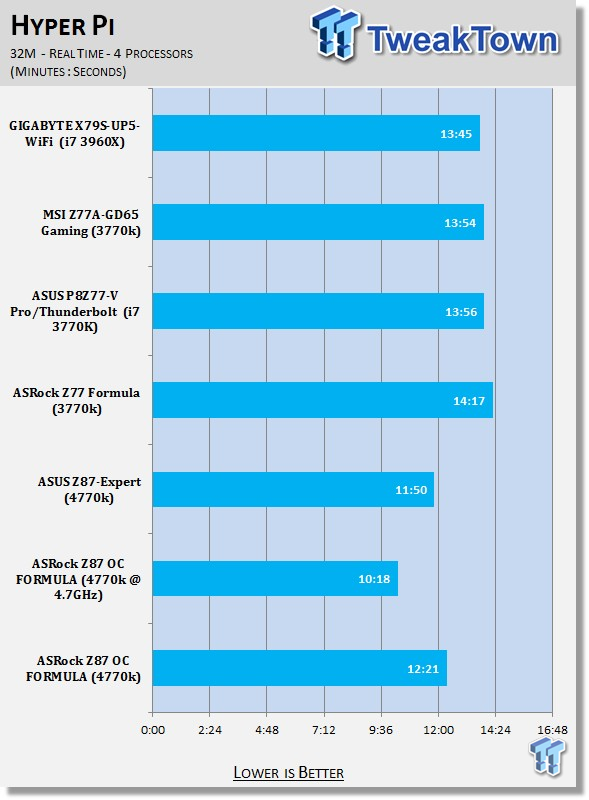
AIDA64
Version and / or Patch Used: 1.00.1035BETA
Developer Homepage: http://www.aida64.com
Product Homepage: http://www.AIDA64.com
Replacing Everest in our labs is AIDA64. This new testing suite is from the core development team from Lavalys and continues that tradition. The guys have thrown in better support for multithreaded CPUs as well as full 64 bit support. We use this to test memory and HDDs for now, but may find ourselves opening this up to other areas of the motherboard.


Starting off with Hyper PI you can see that out of the box performance is a little slower than the ASUS Z87-Expert. We're lagging behind by about 30 seconds. With few boards tested so far, it's hard to know just how this compares on a broad scale.
AIDA64 numbers are really interesting. We just got updated with a new version of the software and the numbers in the CPU testing have really skyrocketed against the other numbers here. We don't want to put too much emphasis on the results of this particular test here. We'll know more as we test more boards.
Nonetheless, you can see when we overclock, though, improvements are seen in all areas. We'll be keeping a close eye on this in the coming weeks.
System Benchmarks
PCMark 7
Version and / or Patch Used: 1.04
Developer Homepage: http://www.pcmark.com
Product Homepage: http://www.pcmark.com
PCMark 7 includes a range of tests that give different views of your system's performance. In the Advanced Edition you can choose which tests to run. The common use and hardware component tests are unavailable in the Basic Edition.
Overall system performance is measured by the PCMark test. This is the only test that returns an official PCMark score. The Lightweight test measures the system capabilities of entry-level systems and mobility platforms unable to run the PCMark test, but it does not generate a PCMark score. Common use performance is measured by the scenario tests - Entertainment, Creativity and Production - each of which results in a scenario score. Hardware component performance is measured by the hardware tests - Computation and Storage - each of which results in a hardware score.

MediaEspresso
Version and / or Patch Used: 6.5
Developer Homepage: http://www.cyberlink.com/
Product Homepage: http://www.cyberlink.com/products/mediaespresso/overview_en_AU.html?fileName=overview&r=1
MediaEspresso is a blazingly fast media universal converter that can transcode your videos, photos and music files and out put them to a huge range of portable devices including mobile phones, portable media players and even game consoles. With technologies like Smart Detect, Direct Sync and CyberLink's TrueTheater™ video enhancements, you can not only forget about complicated format, resolution and output settings, but your converted file will come out the other side looking better than when it went in!

Looking at stock performance, you can see under both PCMark 7 and MediaEspresso the ASRock Z87 OC Formula comes out ahead of the Z87-Expert. We've got about 140 points extra in PCMark 7 and just over 40 seconds being shaved off our encode time.
As always, when we throw overclocking into the mix, you can see that we've got a clear boost in both areas.
USB 2.0 and 3.0 Benchmarks
AIDA64
Version and / or Patch Used: 1.70.1400
Developer Homepage: http://www.aida64.com
Product Homepage: http://www.AIDA64.com
Replacing Everest in our labs is AIDA64. This new testing suite is from the core development team from Lavalys and continues that tradition. The guys have thrown in better support for multithreaded CPUs as well as full 64 bit support. We use this to test memory and HDDs for now, but may find ourselves opening this up to other areas of the motherboard.
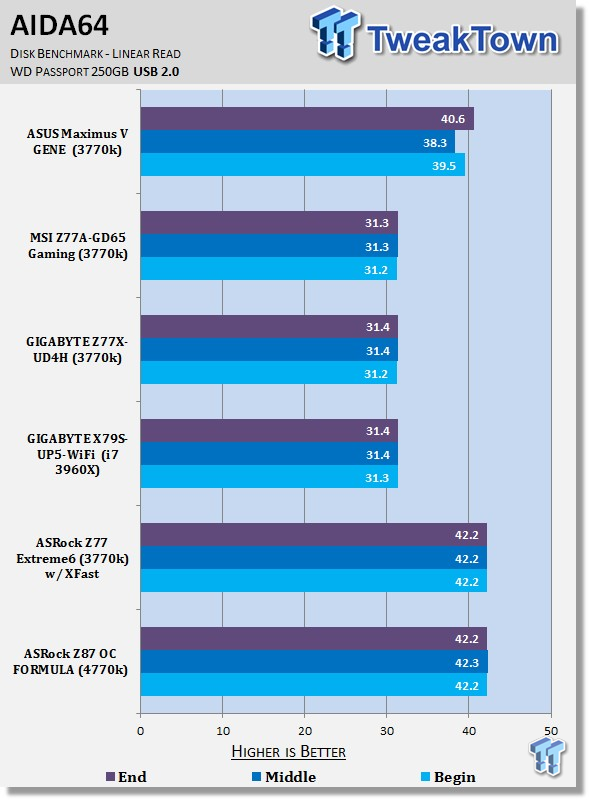

USB 2.0 and 3.0 performance is very standard here. We're actually going to update our USB 3.0 device in the next review or two review to see if we can help separate the boards a bit more.
For now, though, the results are just as you'd expect.
SSD Benchmarks
AIDA64
Version and / or Patch Used: 1.70.1400
Developer Homepage: http://www.aida64.com
Product Homepage: http://www.AIDA64.com
Replacing Everest in our labs is AIDA64. This new testing suite is from the core development team from Lavalys and continues that tradition. The guys have thrown in better support for multithreaded CPUs as well as full 64 bit support. We use this to test memory and HDDs for now, but may find ourselves opening this up to other areas of the motherboard.

HD Tune Pro
Version and / or Patch Used: 4.61
Developer Homepage: http://www.hdtune.com
Product Homepage: http://www.hdtune.com
HD Tune Pro gives us accurate read, write and access time results and for the last couple of years has been gaining popularity amongst reviewers. It is now considered a must have application for storage device testing.
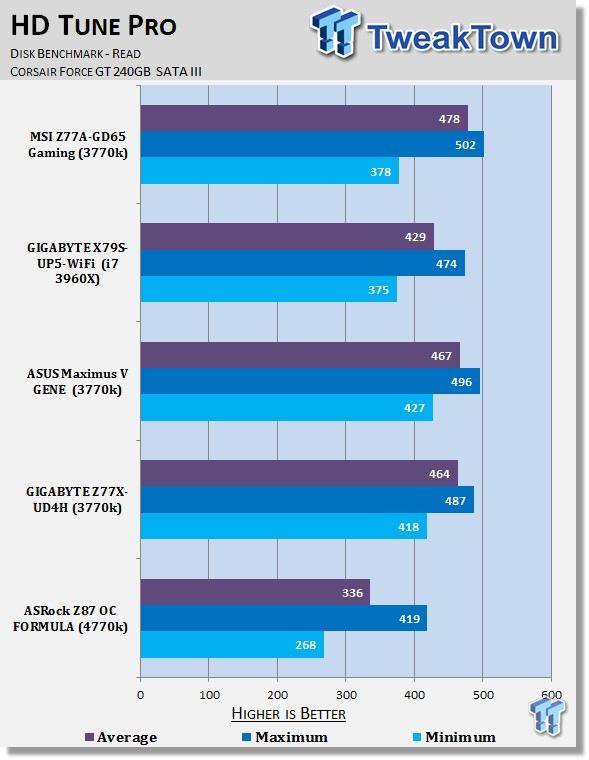
Looking at SSD performance we can see that the ASRock board is slightly ahead across the board when compared to the ASUS option, but it is behind the older Z77 options.
HD Tune Pro results don't show the SSD performance in the same light unfortunately. Across the board you can see the numbers are down. We did reboot a few times and also let the system stay idle for 20 minutes before testing. The results were consistent, though, with just a slightly bit of fluctuation being seen.
Memory Benchmarks
AIDA64
Version and / or Patch Used: 1.00.1035BETA
Developer Homepage: http://www.aida64.com
Product Homepage: http://www.AIDA64.com
Replacing Everest in our labs is AIDA64. This new testing suite is from the core development team from Lavalys and continues that tradition. The guys have thrown in better support for multithreaded CPUs as well as full 64 bit support. We use this to test memory and HDDs for now, but may find ourselves opening this up to other areas of the motherboard.
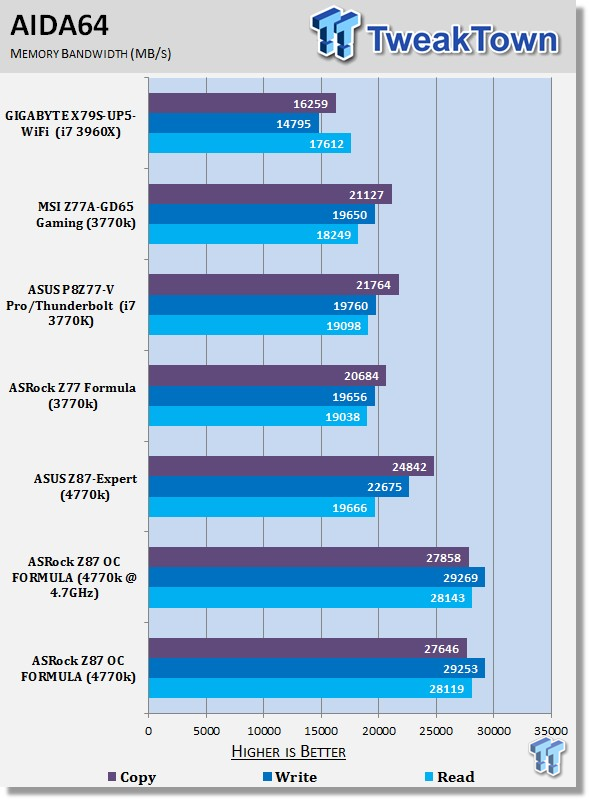
Memory performance across the board is extremely strong at both stock and overclocked. Overclocking doesn't see the usual kind of boost, but you can see at stock, the numbers are strong.
Gaming Benchmarks
3DMark 11
Version and / or Patch Used: 1.0
Developer Homepage: http://www.futuremark.com
Product Homepage: http://www.3dmark.com/3dmark11/
3DMark 11 is the latest version of the world's most popular benchmark. Designed to measure your PC's gaming performance 3DMark 11 makes extensive use of all the new features in DirectX 11 including tessellation, compute shaders and multi-threading. Trusted by gamers worldwide to give accurate and unbiased results, 3DMark 11 is the best way to consistently and reliably test DirectX 11 under game-like loads.

Metro 2033
Version and / or Patch Used: Latest Steam Update
Timedemo or Level Used: Built in Benchmark
Developer Homepage: http://www.4a-games.com//
Product Homepage: http://www.thqnordic.com/
Metro 2033 is an action-oriented video game with a combination of survival horror and first-person shooter elements. The game is based on the novel Metro 2033 by Russian author Dmitry Glukhovsky. It was developed by 4A Games in Ukraine and released in March 2010 for Microsoft Windows and Xbox 360.[3] In March 2006, 4A Games announced a partnership with Glukhovsky to collaborate on the game.[4] The game was announced at the 2009 Games Convention in Leipzig;[5] a first trailer came along with the announcement.[6] A sequel was announced, currently titled Metro: Last Light.

Overclocking sees a slightly boost in the lower resolution performance, but for the most part there's really not much difference between the setups. We're more video card limited here than CPU limited.
Temperature and Power
Power Consumption
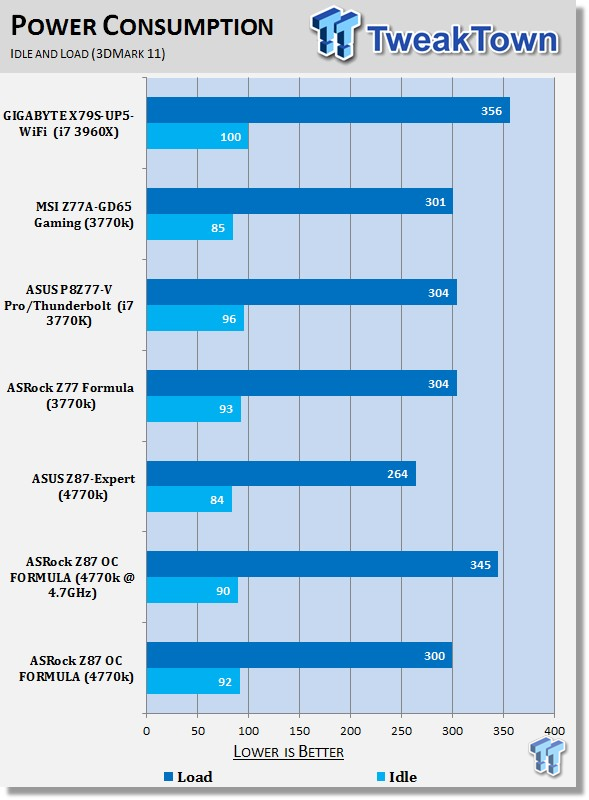
At stock the power draw on the ASRock offering is higher than the ASUS board. We're sitting at numbers similar to the Z77 platform. The same can be seen at load with the numbers being roughly 15% higher than the ASUS option.
Overclocking doesn't change the idle draw, but you can see, we've got a 15% increase in load.
Core Temperature

Looking at the heat numbers you can see at stock we're actually running slightly lower than the ASUS when it comes to load. As for idle, you can see all three Z87 results are very similar, which is a little up on the Z77 platforms numbers.
Overclocked, though, we really see that number sky rocket to almost 100c. We're hoping like the Z77 platform, we see this number drop as we hit another batch of processors.
Pricing, Availability and Final Thoughts
Coming in at $294.99 at the time of writing, it's worth mentioning that this is the fourth most expensive Z87 motherboard listed over at Newegg. Saying that, though, it's important to note that the third most expensive is $349.99 and the two most expensive offerings come in at $409.99, so there's really a decent price gap separating the top four boards.
In that $239 - $294 gap, though, we're really got a ton of boards. If you're looking for a feature packed motherboard, the chances are you're going to probably be spending over the $250 mark.
At just under $300, the ASRock Z87 OC FORMULA isn't a cheap option, but looking at it, we really feel that it's a fair price tag for what is being offered. Outside of the OLED Status Display, one of the other features that is awesome on the board is the Conformal Coating to waterproof the board. This is a feature that a lot of people will more than likely not have a huge use for. However, it's definitely something for the more extreme overclockers out there who make use of LN2.
During Computex, I spoke to an overclocker who said that he had two boards die on him during the afternoon. Due to the humidity in Taiwan, the condensation was building up on the boards and the water was killing them. Of course with the new coating offered by ASRock, this is something that you don't have to worry about. Alongside this, though, we've got a ton of other stand out features that include EMI Shielding on the audio chip, 12-Phase Power Design, Premium Alloy Chokes and Hi Density Power connectors to name some of the big ones. We've also got an awesome cooling setup around the CPU area, which has water cooling barbs pre-installed for you.
Something that's important to note, though, is that you don't need to be some extreme overclocker to make use of all these features. A number of these just add to making a board more stable and better built. Even if you're running at stock or overclocking via air or water, these are features that will offer you a better quality experience.
Performance on the board is strong. Out of the box we saw it sit ahead of the pack most the time with the Hyper Pi result really being the only one that fell back a little. SSD performance under HD Tune Pro was a little weird, but we have to admit it's not the first time HD Tune Pro results haven't quite lined up with AIDA64 results, which looked good.
Overclocking was also great, not only that, though, it was super easy. Using the profiles offered on the board, you can overclock with ease. You can use the settings that ASRock offer you as a base and then kind of just work around them. We used the 4.8GHz profile as our base, and while that wasn't quite passable for us (CPU issue), a little adjustment brought us down to 4.7GHz, which was rock solid.
It doesn't matter if you're an extreme overclocker or just someone looking for a quality motherboard, the ASRock Z87 OC FORMULA is a fantastic option. We really love this board and there's a reason it won our Best of Computex 2013 award for the motherboard category. We'll be definitely asking for a full packaged AC version of the board which carries the wireless networking feature when it comes out soon.

